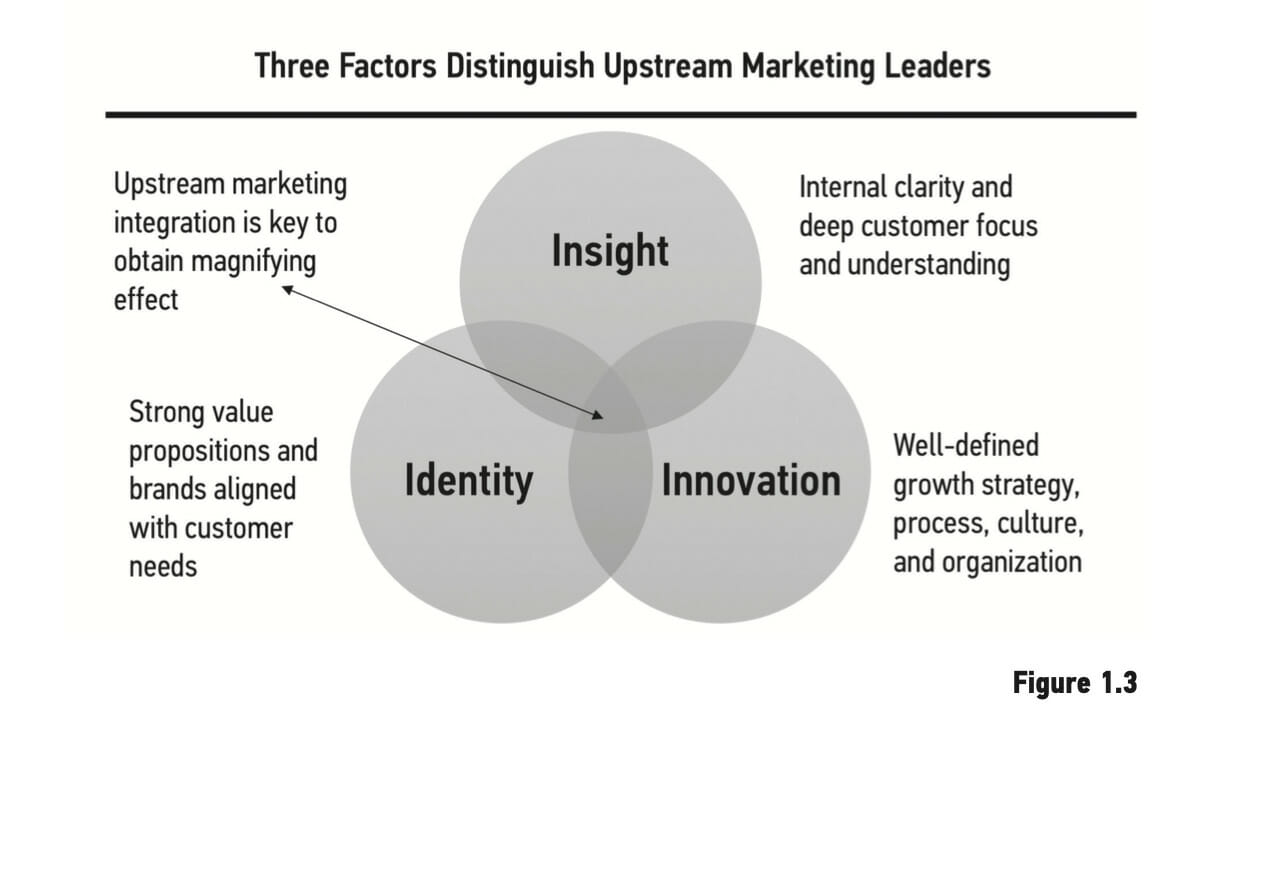Amazon, Apple, Google, Nike, Southwest Airlines, Starbucks, and The Walt Disney Company.
How have these companies – and others like them – been able to consistently grow their business compared with others in their respective industries?
3 Core, Game-Changing Principles
As different as these companies are in terms of the products and services they offer and the markets they serve, their approach and adherence to upstream marketing are remarkably similar.
Each of these prominent companies emphasizes three core principles:
- Insight: gaining internal clarity and deep customer understanding as the basis for transformative growth
- Identity: building strong value propositions and brands that deliver on customer needs and align with company operations
- Innovation: ensuring a continual stream of creative solutions to meet evolving customer needs and to expand the business
A Formula for Upstream Marketing Success
Leading upstream marketers infuse these principles into everything they do and obtain synergies along the way. If there is a formula for success, it’s this:
The key to effective upstream marketing is that each principle builds upon the others, reinforcing and magnifying them. Combined, they form an integrated whole much more powerful than the sum of its parts because the principles are all working together, all the time.
As shown in figure 1.3, insight, identity, and innovation are inextricably linked across all parts of the organization.
For example, insight isn’t relegated to the marketing research department. Identity management extends far beyond the walls of the marketing department or ad agency.
Innovation is more than an occasional brainstorming session. After years of incorporating these principles into their business models, leading upstream marketers become perpetual insight-identity-innovation machines.
Many organizations say they have a similar set of principles…and some do. What distinguishes best-in-class companies are three integrated principles and six related best practices that drive everything they do.
4 Key Questions Answered With an Upstream Marketing Framework
As companies recognize the differences between upstream and downstream marketing, a new framework and tools for applying insight, identity, and innovation principles and practices are required. The framework, built on industry best practices, EquiBrand’s research and in-market client experience, provides the discipline and structure for analyzing and synthesizing results.
Think of the upstream marketing framework as a structured way to answer four framing questions:
- Where to play?
- How to win?
- How might we?
- What would have to be true?
Insight, Identity, and Innovation serve as first principles to direct the approach and help answer the questions. A first principle is a basic assumption that cannot be deduced any further. Many great thinkers, from Aristotle to Elon Musk, use first principle thinking, which involves boiling things down to the fundamental parts that you know to be true and then building up from there.
Insight, identity, and innovation are the first principles of upstream marketing.
Attached to each principle are two best practices. Finally, underlying the principles and practices is a process to integrate and execute upstream marketing.
The image below shows the framework, including details describing each component. There is order to the framework – but don’t get hung up on the sequencing and alignment of individual components. The principles, framing questions, and best practices are interrelated and will overlap.
There is order to the framework – but don’t get hung up on the sequencing and alignment of individual components. The principles, framing questions, and best practices are interrelated and will overlap.
For example, the question “What would have to be true?” shown at the bottom of the figure relates to every element of the upstream marketing process.
Ultimately, when you look at successful upstream marketing, the strategies can be attributed to the three guiding principles we discussed here.
Want to learn more about these strategies? We’re pleased to offer a free download of the first chapter of our book Upstream Marketing. Access it here.





















Follow EquiBrand